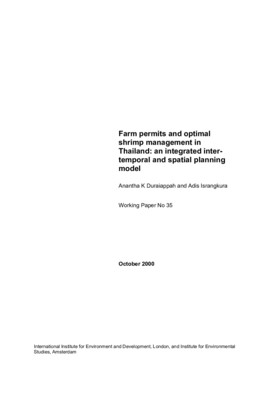Farm Permits and Optimal Shrimp Management in Thailand: An integrated intertemporal and spatial planning model

Shrimp production in Thailand is characterised by boom and bust cycles. The busts are caused by production crashes as a result, primarily, of disease outbreaks. A primary factor linked with disease outbreaks is poor water quality, which in turn is a result of management strategies on shrimp farms. The major focus of existing studies has been at the farm level. We suggest that although farm management is a critical variable in determining sustainability for the sector, farm density plays an equally important role. In this paper, we address both factors. We begin by identifying the optimal combination of farm strategies. Once the farm management options have been identified, the optimal farm densities for three principal shrimp farming regions are computed. Spatial variation in the form of soil differences is taken into account in the analysis. Preliminary results suggest that water management and farm density are the two most critical variables determining sector sustainability.
Cite this publication
Available at https://www.iied.org/8143iied